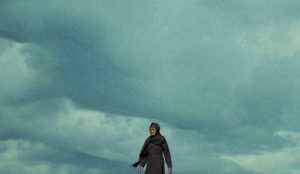 Fillmofil.ba proudly represents the works of young critics done in program Talents Sarajevo of 26th Sarajevo Film Festival with participation of Goethe-Institute Sarajevo
Fillmofil.ba proudly represents the works of young critics done in program Talents Sarajevo of 26th Sarajevo Film Festival with participation of Goethe-Institute Sarajevo
Written by: Elena-Diana Smeu
THIS IS NOT A BURIAL, IT’S A RESURRECTION (2019) might be the only film from the country of Lesotho and one of the fewest African titles (if any) that have been part of the Sarajevo Film Festival. The feature, directed by Lemohang Jeremiah Mosese, a Lesotho-born and Berlin-based filmmaker who emerged as one of the daredevils from Berlinale Forum (MOTHER, I AM SUFFOCATING. THIS IS MY LAST FILM ABOUT YOU, 2019), had its premiere at Venice’s Biennale College Cinema and was featured in the Kinoscope section of Sarajevo Film Festival, a special programme that ensembles films outside of Southeastern Europe. THIS IS NOT A BURIAL, IT’S A RESURRECTION is a breakthrough encounter with a complex and daring piece of filmmaking, one that mingles scenic moving images (shot in digital by Pierre de Villiers and textured with 16mm and 35mm grains) with an experimental soundtrack. The story revolves around the octogenarian Mantoa (played by the late veteran actress Mary Twala Mhlongo), who plans to arrange her funeral, thus raising the first sparks of protest in the village of Nasaretha.
THIS IS NOT A BURIAL, IT’S A RESURRECTION’s trama lays on the ashes of both Lesotho’s religious background and current state of industrial affairs in the rural areas. A narrator (Jerry Mofokeng), player of lesiba, is revealing in his monologues the history of Nasaretha, with a certain mythological distance from naming the factual. Since the 1980s, the mountainous part of Lesotho has been the centre of a larger-scale transfer scheme, called Lesotho Highlands Water Project, that manages the transfer of water from the Orange River to South Africa. The project has reshaped the landscape of Lesotho – transforming nature into reservoirs and hydroelectric sites, and also obliging villagers to resettle in cities. Without a direct reference to this specific project (even the workers are always kept blurred), Mosese dwells with metaphors and myths how forced industrialization affects personal stories, compromizing even the swan songs (and dances) of Mantoa.
The woman finds out that her son, a miner, has died. Mantoa solemnly returns to her vivid-blue room, not just ready for mourning, but for her own burial. Dressed in a baroque gown, she dances herself to the song of death as the camera is following her steps, shifting from the usual static and panoramic framings of the mise-en-scène. By daytime, Montoa confronts the other villagers about her funeral arrangements, just to acknowledge that the cemetery is right on the map for the future man-made flooding, which will serve the dam reservoir. In this tale of life and death, Mantoa’s strong engagement in spiritual practices unravels the traces of past colonialism. THIS IS NOT A BURIAL, IT’S A RESURRECTION integrates traditional rites, such as burials facing East, with the recurrency of Catholic symbols: the death of the son, crosses, certain names, and even the Pietà-like choreography. All these signs of enforced Westernization uncover the identity displacement the villagers, and especially Mantoa, have lived and come to terms with. Now, when other mutations are threatening back again, what’s at stake is much more precious to Mantoa. Her refusal of “industrial progress” (that means leaving the hills of the village and all the vestiges of ancestors) is defending the last sense of belonging. By taking control of her body’s transcendence, she’s fully retrieving her identity.
The stoic performance of Twala demands flipping the pages of history and coming back to the actress Mbissine Thérèse Diop, in her role of Diouna in BLACK GIRL / LA NOIRE DE… (1966), directed by Ousmane Sembène. In a sense, another resurrection took place. Mantoa reincarnates the female powerhouse that stood against the patronizing eyes of colonialism, forced work, and industrialization. The silent, burning gazes of Diouna are no less present in Montoa’s protest, towards the outsiders, but to the fellow villagers as well, for finally succumbing. In her final performance, when we see her naked back, as she is facing the police assistist the resettlement, a young girl from the village takes the place of the spectator. Her eyes, following the act of Montoa, are just as incisive as the ones of Diouna, reclaiming what was stolen. A delicate connection is formed between generations, between past, present, and future (also by invoking a narrator – keeping the oral tradition of African storytelling alive), hinting at the ancestral tribulations of humanity. The ending is not at all pessimistic: the turmoil is dissolving into arresting force.
And this force is more than visible in the esthetics of the film, which is easily an experience for the eyes (and the ears) for its spectacular sights, interesting montage, and music. Mosese, also an editor here, finds a harmonic rhythm by alternating dramatically-charged sequences with anti-climatic sceneries. The editing is guided by Yu Miyashita’s music score, which functions in the best tradition of expressionism. The sharp musical notes are redeeming Mantoa’s inner feelings, and just as in the case of montage, camerawork aligns and trembles altogether with Mantoa, then settles when she unwinds. THIS IS NOT A BURIAL, IT’S A RESURRECTION has a spiritual tone not just for the very nature of the story, but foremost for how the formal devices are reflecting the characters’ intimacy. The film is a synesthetic glimpse in the developing body of work of a distinctive and provocative director, whose soft experimental approach to narrative cinema is a formula that should be seen much more often.






















